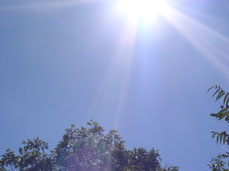Questions
on imaging
using Lenses
- Why is it possible to find the location
and size of an image by tracing only two rays from the tip of the arrow
head representing the object?
- What is the law of reciprocity?
Give an example using a ray diagram.
- Use ray tracing to locate the image
of a real object located a distance of three times the focal length in front
of a converging lens.
- Repeat the above question for the
case that the object distance is smaller than a focal length.
- Can the magnification of a real image
of a real object be smaller than one? Larger than one?
- Are images of real objects through
a converging lens always inverted? How could you make the real image
be erect?
- When will the image of a real object
in a converging lens be a virtual image? How do you see the virtual
image? Draw a sketch showing where to put your eye.
- Are the images formed on your retina
real or imaginary? Are they erect or inverted?
- Answer the previous question for the
images formed on film in a camera.
- Draw a ray diagram for a real object
located in front of a diverging lens. Explain your results.
- Draw a ray diagram to show how a converging
lens can correct for a far-sighted eye.
- Do diverging lenses always produce
virtual images? Do they always have a magnification less than one?
- Show in a ray diagram how a diverging
lens corrects for a near-sighted eye.
- Explain how a manual camera is made
to "focus". How is this done in an automatic camera? How are these
cameras different from a point-and-shoot type?
Last Modified:
Tuesday, 23-Sep-2003
malekis@union.edu

